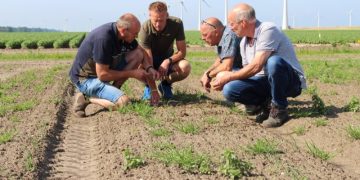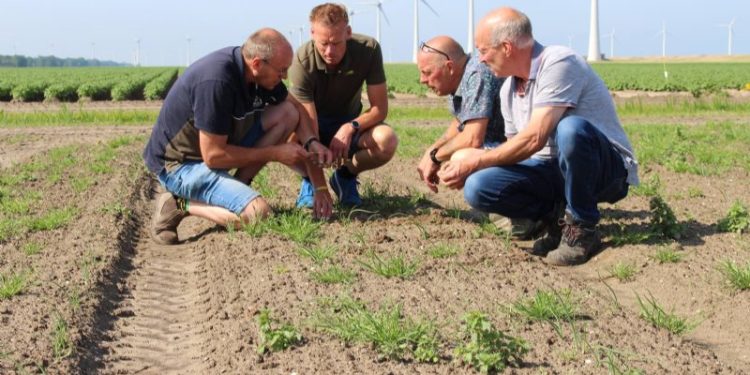This article sheds light on the alarming threat posed by the onion fly (Delia antiqua) to a significant cultivation area. By utilizing the latest data from reputable sources, we explore the impact of this pest on farmers, agronomists, agricultural engineers, farm owners, and scientists. Discover effective strategies and innovative solutions to safeguard these crucial agricultural regions.
The onion fly, commonly known as the “uienvlieg,” has emerged as a significant concern, jeopardizing an important teeltgebied (cultivation area) for onion production. According to recent data obtained from Nieuwe Oogst, this pest has inflicted severe damage, impacting the livelihoods of farmers and posing a substantial challenge for agricultural experts. (Source: Nieuwe Oogst)
The onion fly is a notorious pest that attacks allium crops, primarily onions, causing substantial economic losses and reduced yields. This insect lays its eggs near the onion plant, and upon hatching, the larvae burrow into the bulbs, leading to rot and spoilage. The impact of onion flies is not limited to the immediate loss of crops but also affects market prices and consumer availability.
In recent years, onion fly infestations have become more prevalent due to various factors such as changes in climate patterns, reduced crop rotation practices, and increased resistance to conventional pesticides. The cultivation area at risk, as highlighted by the aforementioned data, serves as a wake-up call for the agricultural community to join forces and combat this threat effectively.
To mitigate the damages caused by onion flies, farmers and experts are adopting integrated pest management (IPM) strategies that focus on a holistic approach rather than relying solely on chemical treatments. This approach involves employing a combination of cultural, biological, and chemical control measures to prevent and manage pest populations.
Cultural practices, including crop rotation, weed control, and timely planting, help disrupt the life cycle of the onion fly and reduce the availability of suitable hosts. Additionally, biological control methods, such as the use of beneficial insects and nematodes that target onion flies, prove to be effective in curbing their population.
Furthermore, ongoing research and advancements in agricultural science have paved the way for innovative solutions. Scientists are exploring the potential of pheromone traps, genetically modified onion varieties with increased resistance, and novel biopesticides derived from natural sources. These developments offer promising alternatives to conventional pest control methods and may provide more sustainable and eco-friendly solutions.
In conclusion, the threat posed by the onion fly to a vital teeltgebied demands urgent attention from farmers, agronomists, agricultural engineers, farm owners, and scientists. By leveraging integrated pest management strategies, implementing cultural and biological control measures, and embracing innovative solutions, we can effectively combat this pest and protect our onion cultivation areas. Collaboration, research, and knowledge exchange will play crucial roles in safeguarding our agricultural industry and ensuring food security for future generations.
Tags: onion fly, uienvlieg, pest management, integrated pest management (IPM), cultural practices, biological control, innovative solutions, sustainable agriculture, crop protection, agriculture industry, food security






























